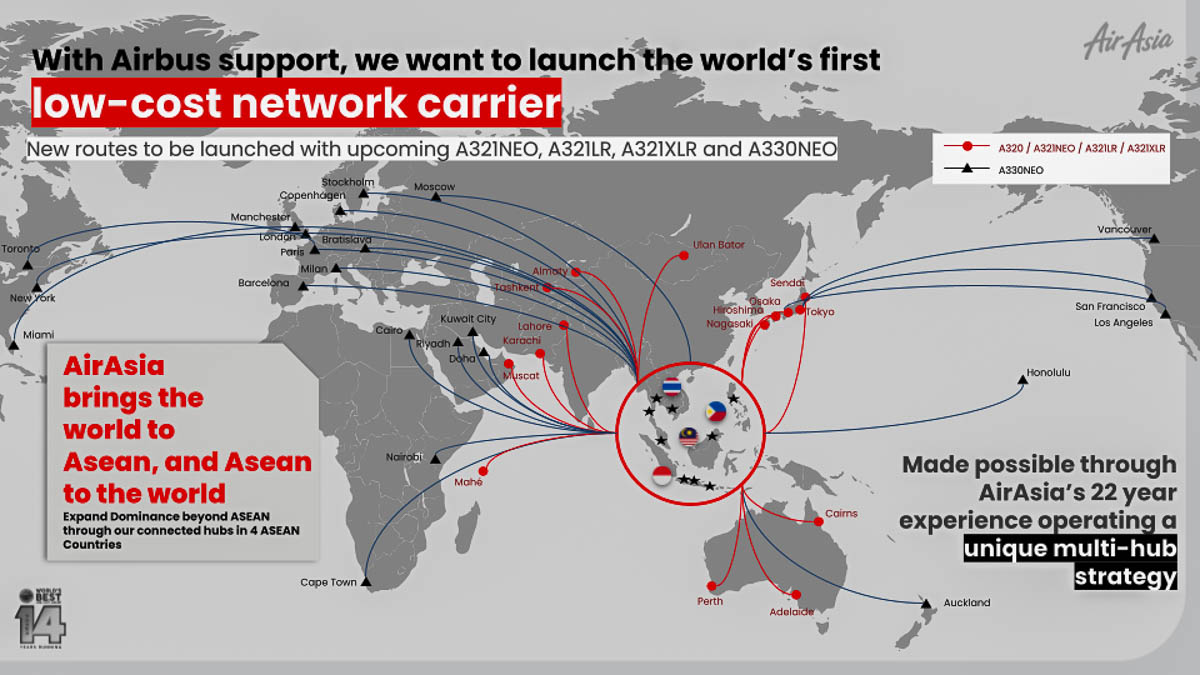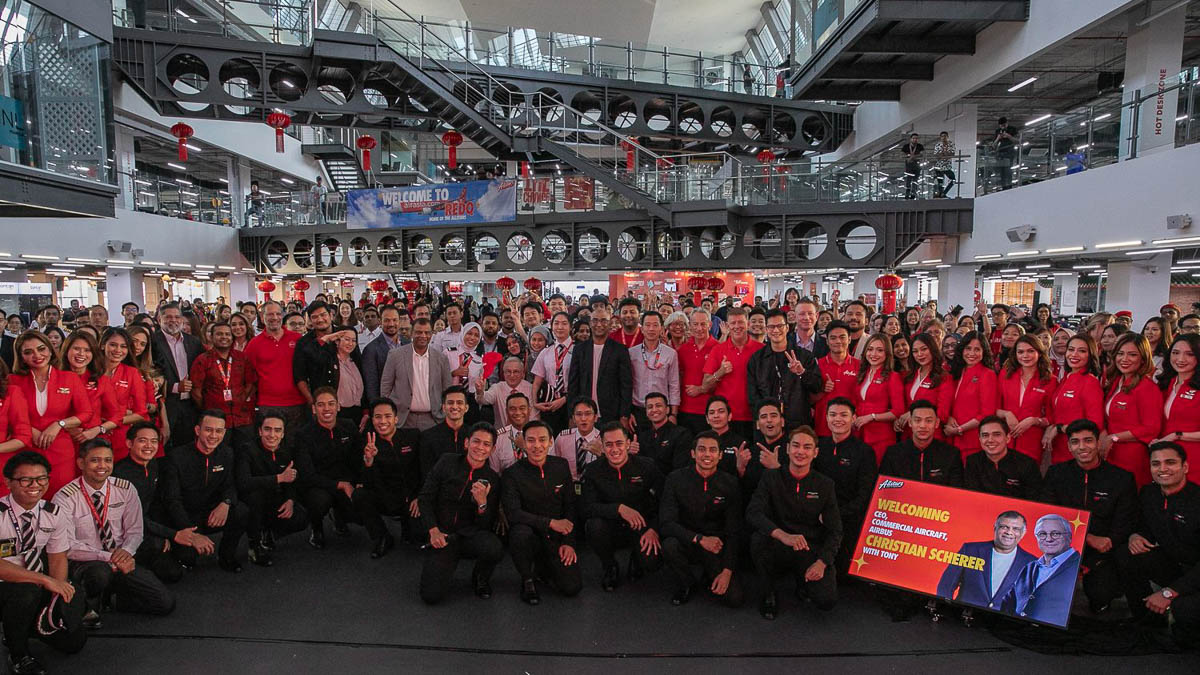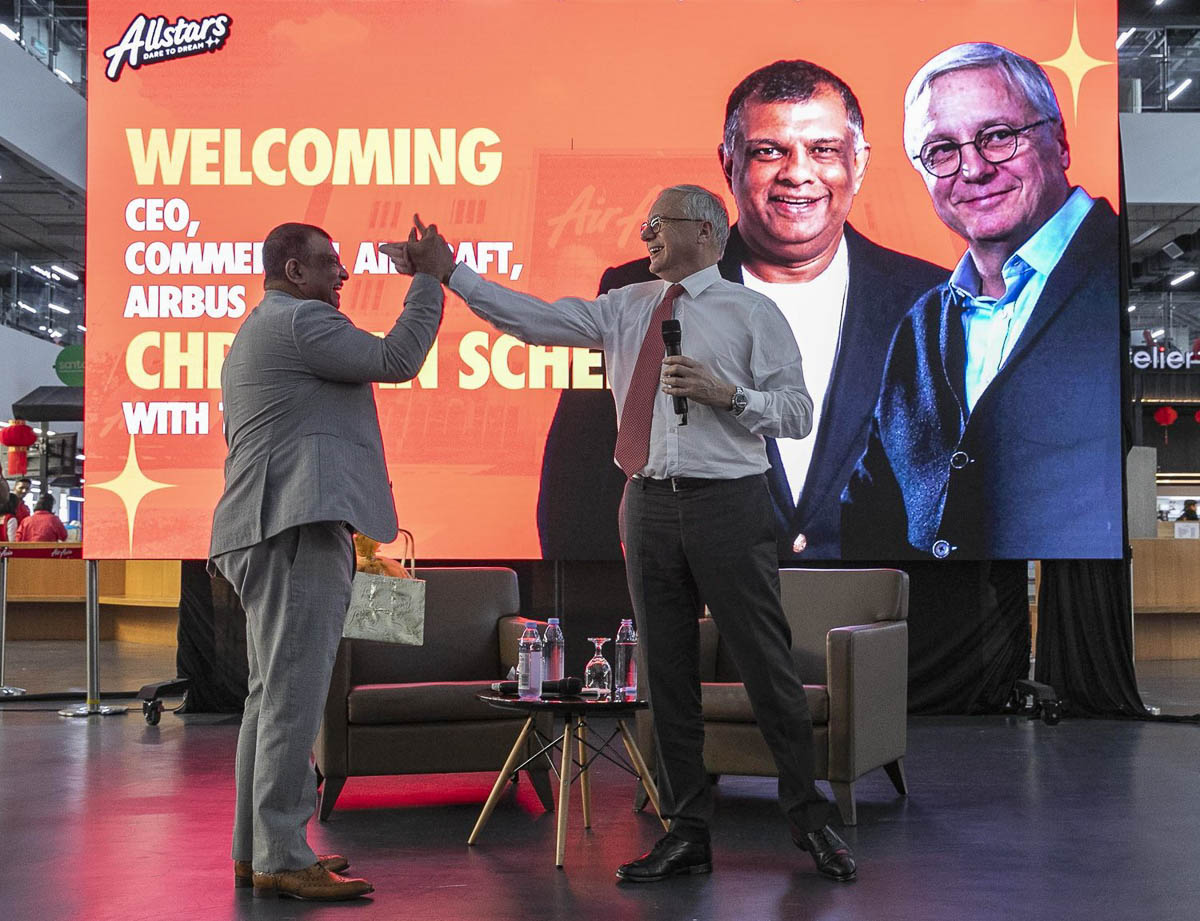AirAsia has unveiled plans to launch the world’s first low-cost network carrier, leveraging 22 years of its unique multi-hub strategy through its airlines in Malaysia, Thailand, Indonesia, the Philippines, and soon Cambodia. The announcement was made during a welcoming ceremony for Christian Scherer, recently appointed CEO of the Commercial Aircraft business of Airbus, to RedQ – AirAsia’s corporate headquarters in Malaysia. On hand to greet him were hundreds of AirAsia staff, CEOs and management who work in the exclusively Airbus airline. This is Christian Scherer’s first visit as CEO to the home of over 6,000 team members, known as Allstars.
What is a low-cost network carrier?
According to ‘Uncle Google’, airline network carriers are those with a long history, “Traditional carriers who rely on Hub n Spoke models”. As can be seen above, the AirAsia Group of airlines has hubs in Malaysia and its near neighbours. As a well developed low-cost airline, it has a good case to become a low-cost network carrier with plans to operate a hub and spoke model with a number of additional virtual hubs spanning Asia, Europe, Africa and the US in the future.
Starting with a fleet of just two aircraft in 2001, AirAsia swiftly converted to an all-Airbus fleet, following due diligence to determine the best aircraft type for the low-cost model in the region. The decision has enabled over two decades of a unique multi-hub strategy through the Group of airlines in Malaysia, Thailand, Indonesia and the Philippines – with the newest airline AirAsia Cambodia, ready to take flight in coming months.

Tony Fernandes, CEO of Capital A, AirAsia aviation group umbrella company, speaking at the welcoming, said:
…. All of our achievements, including becoming one of the largest and most popular airlines in the world, have been possible with our great partnership with Airbus. Their versatile aircraft provide the best fit for our network expansion plan, with the continuous developments and improvements to the aircraft, improved fuel efficiency, increase in payload and in range capabilities, all of which offer unrivalled economics for our commitment to consistently deliver best value, high quality service.Tony Fernandes
The airline looks forward to expanding their narrow-body fleet with the introduction of the A321XLR and are exploring opportunities with the A321LR, which will gradually replace their workhorse A320 predecessor over coming years. These will operate from AirAsia’s key hubs including Kuala Lumpur, Bangkok, Jakarta and Manila. These new specification aircraft will enable greater flexibility on existing short to medium-haul routes and network expansion to new destinations, including exciting secondary markets such as North Asia, Australia and Central Asia from Southeast Asia.
He added that:
…. With our wide-body Airbus A330 fleet including the introduction of A330neo, we are also looking to expand our medium to long-haul network to the European continent, to cities like London, Paris, Amsterdam, Bratislava, Barcelona, Copenhagen, Africa (Cairo, Nairobi, Cape Town), East Coast North America (New York, Miami, Toronto) via Europe and West Coast North America (San Francisco, Los Angeles, Vancouver) via Japan.
He also made mention of the tough years of the pandemic and thanked Christian and the Airbus team for Airbus’ continuous support and commitment to AirAsia as a testament to their partnership. Despite all odds, he noted that AirAsia had managed to survive and come back better, stronger than ever.
The event celebrated the long-standing and strong partnership spanning over 20 years between Airbus and AirAsia, proud to call themselves World’s Best Low-Cost Airline as voted by Skytrax for the past 14 years with close to 800 million passenger flown.
As one of Airbus’ biggest customers, the AirAsia Group have an orderbook of 647 aircraft consisting of 612 A320 Family and 35 A330 Family aircraft with another 362 A321neo, 20 A321XLR and 15 A330neo to be delivered over the next decade as the Group future growth plan falls in place.
AirAsia will resume its Airbus A321neo deliveries this year in line with strong forecast demand, starting with the first post-pandemic delivery expected in June. Importantly, AirAsia will be one of the largest operators of this new longer range, fuel-efficient, narrow-body new specification aircraft which is set to revolutionise the aviation landscape.








This Post Has 0 Comments